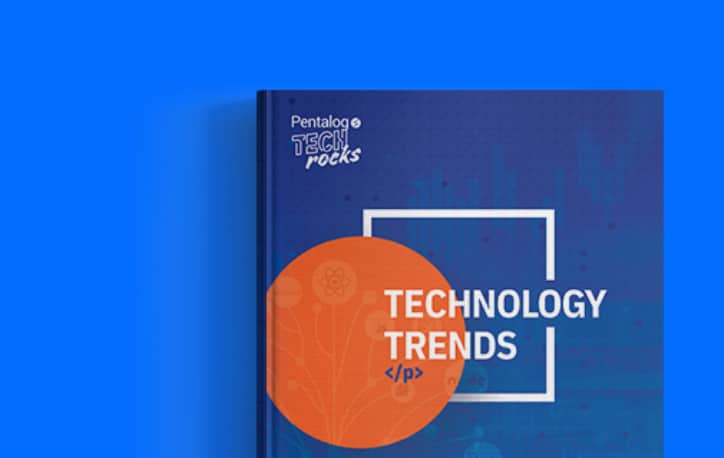Last Updated on November 13, 2025
In a poll by CFO Daily News, 86% of accounts payable (AP) professionals admitted their Master Vendor File (MVF) needed work. More than two-thirds said it could use some cleaning, while nearly one in five described their MVF as a total mess.
When the mess in your MVF spreads across multiple ERP, procurement, and finance systems, it doesn’t just remain an administrative headache. It turns into financial loss.
According to the American Productivity & Quality Center (APQC) estimates that 1% to 2.5% of total annual AP disbursements are duplicate or erroneous payments.
That’s money that could have been saved with cleaner data. Vendor matching software help you do just that.
In this post, we’ll discuss what vendor matching software truly is, how it works, and what to look for when selecting one, because, like any other tool, they’re not all built the same. The goal is to help you bring order, accuracy, and trust back to your vendor master, and streamline your accounts payable process along the way.
Why Vendor Data Gets Messy Real Fast
Before we look at the solution, let’s first understand why this problem occurs in the first place.
Ask any procurement or data governance team where their vendor headaches begin, and the answer usually points to the same root cause: fragmentation – of both data and processes.
Vendor information lives in too many places, owned by too many teams, and entered by too many hands. This fragmentation is what gives rise to duplicate and inconsistent records that distort the truth about your supplier base.
A supplier might be set up in the ERP under one name, added again in the supplier portal with a slightly different spelling, and appear yet again in accounts payable with an outdated address.
Multiply that by hundreds or thousands of suppliers, and you have a vendor master that can’t be trusted.
How Dirty Vendor Data Affect Business
What many teams fail to realize until they are knee-deep into this mess is that the consequences of vendor data fragmentation and duplication go far beyond just untidy records.
- Duplicate vendor records lead to duplicate payments. A study by the Washington State Auditor’s Office shows that between 0.8% and 2% of total vendor payments are duplicates. That might seem small, but it can mean thousands (or even millions) of dollars being paid to vendors in error.
- Inconsistent identifiers break visibility. When tax IDs, addresses, or supplier data don’t align, it becomes impossible to see total spend with a vendor or negotiate better terms for purchase orders.
- Poor data quality feeds compliance risk. Outdated or incomplete records make it difficult to perform accurate sanctions or vendor risk checks.
It’s not that organizations don’t have processes. It’s that manual reviews and one-time cleanup projects can’t keep pace with the constant creation and modification of vendor records. Every new acquisition, new business unit, or new system integration reintroduces the same problem.
By the time finance teams spot the issue, the damage has already happened in the form of duplicate payments, inaccurate spend analytics, and strained vendor relationships.
That’s the gap vendor matching software are built to close.
What is Vendor Matching Software?
Vendor record matching software is a specialized tool that identifies, compares, and consolidates duplicate or fragmented vendor records across different databases. It acts as the central intelligence layer that helps organization maintain a clean, unified, and accurate vendor master.
Think of it as the brain that sits between your ERP, procurement, and accounting systems. It continuously analyzes vendor records, compares key attributes like name, tax IDs, phone numbers, addresses, and banking details to detect matches that humans might miss.
These matches can be exact (for example, two records with the same tax ID), or fuzzy, where minor differences in spelling, abbreviations, or formatting mask the fact that both records refer to the same vendor.
Deduplication is a critical part of vendor or supplier matching software. But the right tool doesn’t stop there.
The real value of a vendor matching engine lies in creating a single source of truth for each vendor that can be trusted across systems and throughout the organization.
When all your systems reference the same, clean and complete vendor records, everything downstream, from payments to reporting, becomes more accurate and efficient.
What It’s Not
As important as it is to know what vendor matching software is, it’s equally important to understand what it isn’t because people often confuse it with other data quality tools.
Vendor record matching software is not:
- Vendor management software. That focuses on onboarding, performance tracking, and compliance documentation.
- A cleansing tool. That standardizes formats and correct obvious errors. Some may also complete data, but they don’t have the intelligence to detect that IBM Corp, International Business Machines, and I.B.M. Corporation are the same supplier, or the capability to merge related records.
What sets a good vendor matching tool apart is its use of fuzzy matching algorithms, probabilistic scoring, and reference data to catch relationships that other rule-based systems may miss. In simpler terms, it doesn’t just look for identical fields; it understands similarity.
Best-performing vendor matching software are comprehensive systems that combine cleansing, comparison, and survivorship logic to identify, reconcile, and merge vendor data into a single, trusted record that supports confident decision-making across the business.
Why Vendor Matching Matters
Maintaining a clean, accurate vendor master is not just a matter of tidiness. It’s about strengthening the foundation that every procurement decision rests on. The quality of vendor data directly affects how effectively a business manages cash, risk, and supplier relationships.
Here are some of the most noticeable benefits a clean vendor database can offer:
1. Full Picture of Supplier Landscape
You can’t manage what you can’t see. When multiple records exist for the same supplier, spend gets split across entities, which distorts total vendor exposure.
Vendor matching software consolidates this information to provide a complete view of your supplier base. You know how much you spend, with whom, and under what terms. This visibility allows:
- Smarter supplier consolidation
- Stronger negotiation power
- Better control over costs
2. Enhanced Efficiency for AP and Procurement Processes
Manual vendor reviews drain hours from AP and procurement teams. Matching software automates the process of flagging potential duplicates, correcting inconsistencies, and ensuring new entries are checked before approval.
The result is cleaner data, fewer manual interventions, and faster invoice processing cycles that save valuable time and free up teams for strategic work instead of constant data firefighting.
3. Compliance and Audit Readiness
Vendor data sits at the center of regulatory and risk management workflows. When vendor identities are duplicated or scattered across systems, it becomes hard to perform sanctions screening and confirm whether a supplier is approved or appears on restricted lists. It also affects due diligence and tax reporting.
A vendor matching platform provides a single, verified record for each supplier. This helps procurement and finance teams demonstrate control and compliance with confidence during audits.
4. Mature Data Governance
Vendor matching is often considered just a finance or procurement problem, but it’s also the key to enterprise data governance. It’s what moves an organization from reactive cleanup to a proactive, governed model where quality is maintained continuously.
A clean, consolidated vendor master provides a reliable foundation for analytics, automation, and advance tech adoption across the enterprise. Organizations that treat vendor matching as part of their broader data quality strategy see measurable gains in data trust, cross-functional collaboration, and decision accuracy.
5. Protection Against Financial Fraud
Duplicate or incomplete vendor records can enable fraudulent transactions, such as matching supplier invoices against fake vendor entries. But when you have a reliable vendor matching system in place, it also complements the invoice matching process.
The invoice matching software ensures every transaction is verified against accurate data to reduce fraud exposure and improve payment status visibility.
How Vendor Matching Software Work
Vendor matching software operates through a series of smart, structured steps designed to identify duplicates, reconcile inconsistencies, and merge related records to create a single source of truth for vendor data. Each step builds on the previous one, adds accuracy and consistency, and helps reduce the risk of errors that manual processes often miss to ensure the data that flows through your systems can be trusted.
To help you better understand the process, here’s an overview of the major steps a supplier matching engine follows:
Step 1 – Data Cleaning and Standardization
Before any matching can happen, vendor and invoice data must be normalized, i.e., brought to a common standard.
This involves cleaning to fill gaps in data, correct obvious errors, and ensures formats are consistent across systems. Once the records are clean, various key attributes, such as names, tax IDs, phone numbers, and addresses are standardized so small variations do not block correct matches.
Think of this step as leveling the playing field. Without this ground work, even the best tool would struggle to find all matches accurately.
At Data Ladder, we have integrated these data preparation processes into the vendor matching tool to give teams the confidence that what enters the matching process is already cleansed and standardized. Not to forget the feasibility and cost-effectiveness of getting it all done, from data prep to consolidation, with just one tool.
Step 2 – Records Matching
When the data is ready, i.e., cleansed and standardized, the matching software compares the various datasets or records of the same entity that exist across systems.
The best vendor or supplier matching software use multiple approaches. These include:
- Rule-based matching: To compare exact fields or follows pre-defined phonetic rules to catch simple variations.
- Fuzzy matching: To detect similarities despite differences in spelling, abbreviations, or formatting.
- Weighted matching: To score each field (name, tax, ID, email, address, etc.) based on its importance.
Together, these layers ensure the system catches both obvious duplicates and subtle variations that might otherwise go unnoticed. Data Ladder’s vendor matching solution, DataMatch Enteprise (DME), uses all these matching algorithms to make sure you never miss a match.
Step 3 – Scoring and Thresholds
At this stage, each potential match receives a confidence score. Higher scores indicate a strong likelihood that two records represent the same vendor, and vice versa. Thresholds (as set by users) tell the system when to merge records automatically and when to flag them for human review.
This ensures precision and reduces both false positives and false negatives, while also balancing speed with control.
Step 4 – Review and Merge
Not every match is straightforward. One of the advantages of working with vendor matching software is that edge cases and uncertain matches are flagged for review.
Once final decisions are made by responsible teams, the system applies survivorship rules to determine which version of each field to retain in the consolidated record. This ensures the resulting vendor master is both accurate and complete to serve as the single source of truth across systems.
Step 5 – Integration and Automation
Finally, the vendor matching software connects with ERP, procurement, and accounts payable systems, so new vendor entries are automatically checked against the master record in real time.
This prevents the same duplication and fragmentation issues from creeping back in, ensures consistency, simplify invoice management, and keeps all systems synchronized.
Data Ladder’s vendor matching solution integrates seamlessly with existing systems (no re-architecture or specific infrastructure setup required). This enables teams to perform continuous validation instead of periodic cleanup, and keeps your vendor master database clean, accurate, and audit-ready throughout the year.
Common Challenges in Implementing Vendor Matching Software (and How to Overcome Them)
Getting a vendor matching engine up and running sounds straightforward: connect your systems and let the software do its work. Dare we say, that’s how it should be.
But, unfortunately, that’s often not the case in reality.
Here are some common challenges organizations encounter during the process, and tips for how to address them:
1. Data Silos and Inconsistent Identifiers
Supplier information often exists across multiple systems and databases, and each may record them differently. Names may be spelled in different ways, tax IDs may be missing, addresses may be outdated or in different formats.
Without mapping all sources and normalizing key identifiers upfront, your matching engine will either miss duplicates or flag too many false positives.
Practical Tip: Start with a thorough audit. Identify all systems holding vendor data, standardize identifiers, and fill critical gaps before matching the records.
2. Over-Matching or Under-Matching
Modern vendor matching software are smart and powerful, but they need clear rules. And this is one of the areas where things can go wrong.
Set the threshold too high, and you miss duplicates. Set it too low, and you risk merging unrelated records. Achieving the right balance here is the key to getting accurate matches, but it requires careful tuning and validation.
Practical Tip: Start with conservative match thresholds and run a pilot on a subset of your vendor data. Review outcomes and tweak match thresholds based on the results. Make sure to involve key stakeholders in approving rules. This seems like a bit of work, but iteration here saves you headaches later.
3. Integration Complexity
Connecting a vendor matching tool with various systems across the organization can be technically challenging. Each of them may have different formats, workflows, and update cycles. And without proper integration, duplicate records may reappear or workflows may break.
Practical Tip: Plan integrations carefully, test thoroughly, and prioritize high-impact systems first. Treat integration as a phased project rather than a single big bang deployment.
4. Team Adoption and Change Management
Even the best software fails if users don’t trust it. It may sound strange to some, but teams that are accustomed to manual processes may resist automation or question the accuracy of automated matches.
Without buy-in, the software’s value is limited.
Practical Tip: Engage stakeholders early. Provide hands-on training as the resistance often comes from the fear of not being able to use the new technology. Share early wins and show how the engine reduces team’s manual workload while improving accuracy to streamline user adoption.
5. Ongoing Data Quality Maintenance
Vendor data constantly changes. New suppliers, acquisitions, system updates and migrations, changes to existing vendors, or manual data entry processes continually reintroduce inconsistencies. A one-time cleanup only solves part of the problem.
Practical Tip: Establish regular review cycles, automated checks, and clear processes for handling new vendor entities. A continuous approach ensures your vendor master stays clean long-term.
Vendor Matching Is a Continuous Process
Even with careful planning and the right processes, implementing vendor matching software isn’t a “set it and forget it” exercise. That’s why choosing a tool that is designed to handle complexity, scale across multiple systems, and simplify ongoing maintenance and staying up to date matters.
Data Ladder’s vendor matching engine is built with these real-world challenges in mind. It’s a frill-free solution to help organizations consolidate vendor records, reduce errors, and maintain a single source of truth without adding unnecessary complexity for teams.
How to Choose Vendor Matching Software: Key Features to Evaluate Before You Buy
Not all vendor matching solutions are created equal. Once you understand the challenges (and impacts) of messy vendor data, the next question that comes up is: how do you know which solution will actually deliver?
The answer is: when evaluating your options, focus on features that directly improve accuracy, reduce risk, and integrate seamlessly with your existing systems. Here are some of the most important ones to consider:
1. Flexible Matching Rules
Every organization has quirks in how vendor data is recorded. Some teams abbreviate names differently, while others have legacy identifiers. Tax IDs may be inconsistent, dates might be recorded in different formats, and addresses might not be standardized by your country’s rules.
A strong matching engine allows for multiple approaches, like exact, fuzzy, and phonetic matching. This flexibility ensures that system doesn’t miss duplicates or create false positives.
2. Scalable Architecture
Vendor masters grow fast. Scalability is a key requirement for keeping pace with them. Both mid-size companies and global enterprises need a solution that can handle high volumes of data without slowing down or sacrificing accuracy.
3. Configurable Scoring and Thresholds
Confidence scoring is the heart of accurate matching. The software should let you define thresholds for automatic merges versus records that need human review. This ensures the right balance between efficiency (through automation) and control.
4. Seamless Integration with Core Systems
A matching engine is only as good as its ability to work with your existing platforms. Look for solutions that integrate seamlessly with your ERP, procurement, and accounts payable systems.
Proper integration keeps vendor records synchronized, prevents fragmentation from creeping back in, and ensures downstream processes like payments and reporting are reliable.
5. Intuitive Human Review and Merge Interface
Even the best algorithms can hit exceptions. A clear, intuitive interface for human review ensures that teams can resolve uncertain matches quickly and confidently, without slowing down or disrupting operations.
6. Transparency and Lineage Tracking
Transparency isn’t just needed for governance and compliance; it also matters for internal accountability. Your chosen vendor matching solution should provide detailed reports on merges, reviews, so teams have insights into the entire process, know why certain records match or didn’t, and track changes made to data over time.
Implementing Vendor Matching Software – How to Get Started?
Understanding the value of vendor matching software is one thing. Taking the first practical steps to implement it effectively is another. Many find the process overwhelming, but it doesn’t have to be.
Here’s a structured approach for you to follow for the smooth implementation of a vendor matching platform:
1. Assess Your Current Vendor Data
Before selecting a solution, take stock of your master vendor file. Identify where duplicates, incomplete records, inconsistent identifiers, or fragmented datasets exist.
Knowing the scope of the problem will help you define success metrics and measure real improvements.
2. Map All Relevant Systems
Vendor information rarely lives in a single system. ERP, procurement platforms, accounts payable, and even legacy systems may each hold fragments of your vendor master. Documenting all sources ensures the matching engine addresses every relevant dataset.
3. Define What “Duplicate” Means for Your Organization
Different organizations have different tolerance levels for data inconsistencies. For some, a slight variation in vendor name may count as a duplicate; for others, it may require mismatched addresses or tax IDs.
Clear definitions guide matching rules and reduce false positives or missed matches.
4. Start Small, then Scale
A pilot project is your safest path. Test the engine on a subset of vendor data, review outcomes, fine-tune rules, and validate results with key stakeholders. Once the pilot delivers reliable results, roll it out to the full vendor master.
5. Plan for Ongoing Data Hygiene
Vendor data changes constantly. Implement regular review cycles, automated checks, and update processes to keep your master file clean accurate, and trusted over time.,
By following these steps, you set up your organization for a smoother implementation and ensure that the vendor matching engine delivers measurable impact from day one.
Get Your Vendor Master in Shape with a Matching Tool
Duplicate records, inconsistent identifiers, and fragmented processes don’t just create administrative headaches; they obscure insights, slow down processes, increase compliance risks, and cost organizations real money. According to Ron Stewart, CEO of PRGX, between 1% and 3% of the money companies spend annually on services or for supplies is duplicative or incorrectly calculated.
A powerful vendor matching engine addresses these challenges head-on. By identifying duplicates, reconciling inconsistencies, and creating a single source of truth, it transforms vendor master data from a liability into a strategic asset.
But it’s important to note that since every organization’s vendor data situation is unique, selecting the right solution, defining clear rules, and maintaining ongoing data hygiene are critical to success.
The effort pays off in cleaner vendor records, reduced errors, better supplier visibility, stronger governance, tangible cost savings, and more informed decision-making across the enterprise.
Take the Next Step – Try Data Ladder Today
Data Ladder’s vendor matching software helps organizations simplify the entire process by tying in cleansing, standardization, matching, and merge and survivorship into a single platform. It also integrates seamlessly with procurement, AP, and ERP systems without the need for any tech investments or infrastructural overhaul.
Download a free Data Ladder trial today or request a demo to see how our platform can turn your vendor master into a trusted source of truth across your systems.





































